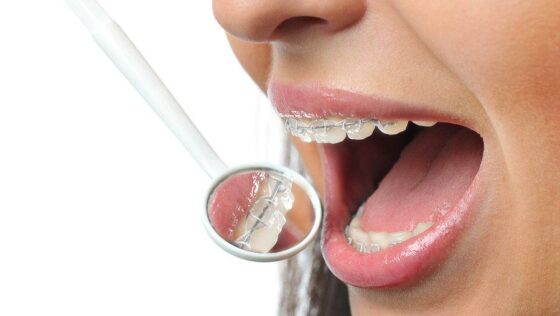About Legacy Orthodontics
About Legacy Orthodontics
Blog Article
The Ultimate Guide To Legacy Orthodontics
Table of ContentsWhat Does Legacy Orthodontics Do?Some Known Questions About Legacy Orthodontics.More About Legacy OrthodonticsThe Single Strategy To Use For Legacy OrthodonticsThe Legacy Orthodontics Ideas
In enhancement, we supply flexible treatment schedules, adaptable repayment options and an enjoyable, delightful experience.An orthodontist is a dental expert trained to detect, stop, and treat teeth and jaw irregularities. They fix existing problems and are educated to determine problems that may establish in the future. Orthodontists deal with individuals of every ages, from kids to adults. Individuals usually connect an ideal smile with healthiness.
Malocclusion, or misaligned teeth, can lead to oral problems, consisting of dental cavity, gum tissue illness, and difficult or excruciating chewing. However not everybody is born with straight teeth. If you have a poor bite or large spaces in between your teeth, you might desire to speak with a dentist concentrating on orthodontic treatment.
All About Legacy Orthodontics
( Photo Credit: DigitalVision/Getty Images) Orthodontists use fixed and detachable oral devices, like dental braces, retainers, and bands, to alter the position of teeth in your mouth. Orthodontic treatment is for oral abnormalities, including: Jagged teethBite problems, like an overbite or an underbiteCrowded teeth or teeth that are too much apartJaw misalignmentThe objective of orthodontic treatment is to improve your bite.
A healthy and balanced bite guarantees you can consume, chew, and speak appropriately. While you might assume of orthodontists as mainly for children or teenagers that need braces, they can deal with dental troubles at any kind of age. Orthodontists participate in university, dental school, and orthodontic institution. After graduation, they spend 2 or 3 years in an orthodontic residency program.
, but not all dental professionals are orthodontists. They focus on two areas: How to appropriately and securely relocate teeth How to properly guide advancement in the teeth, jaw, and faceOnce an orthodontist has finished training, they have the alternative to come to be board accredited.
Some Ideas on Legacy Orthodontics You Should Know
Malocclusion leads to tooth congestion, an askew jaw, or irregular bite patterns. Malocclusion is typically treated with: Your orthodontist affixes metal, ceramic, or plastic square bonds to your teeth.
If you have just minor malocclusion, you might be able to make use of clear braces, called aligners, as opposed to standard braces (https://packersmovers.activeboard.com/t67151553/how-to-connect-canon-mg3620-printer-to-computer/?ts=1727695183&direction=prev&page=last#lastPostAnchor). Some individuals require a headwear to assist move teeth into line with stress from outside the mouth. After braces or aligners, you'll require to put on a retainer. A retainer is a custom tool that maintains your teeth in area.
They're most typically used on youngsters. They can create additional room in the mouth without needing to pull teeth. If you have a severe underbite or overbite, you might require orthognathic surgical treatment (likewise called orthodontic surgical treatment) to extend or shorten your jaw. Orthodontists make use of cords, medical screws, or plates to sustain your jaw bone.
You may need to see an orthodontist if you have: Crowding or not adequate room for all of your teethOverbite, when your upper teeth come over your base teethUnderbite, when your bottom teeth are also much forwardSpacing or concerns with gapsCrossbite, which is when your upper teeth fit behind visite site your base teeth when your mouth is closedOpen bite or a vertical gap in between your front bottom and top teethMisplaced midline, when the center of your bottom and top teeth don't line up Correcting a dental malocclusion can: Make biting, eating, and talking easierImprove the balance of our face and your general appearanceEase pain from temporomandibular joint conditionsSeparate your teeth and make them easier to clean, aiding prevent dental cavity or cavities It's usually a dentist who first notifications misaligned teeth during a routine examination.
The Legacy Orthodontics PDFs

During your initial orthodontic consultation, you'll likely have: A dental examPhotos taken of your face and smileDental X-raysPanoramic (360 level) X-rays of your face and headImpressions to produce mold and mildews of your teethThese tests will certainly aid your orthodontist know how to wage your therapy. leesburg clear braces. An orthodontist is a dental expert who's had training to treat your teeth and jaw
An orthodontist is focused on your bite, so something like a cracked tooth would be taken care of by a dental practitioner. Orthodontists are concentrated on your bite, or the way your teeth fit together, and the straightness of your teeth.
Ever before asked yourself how celebrities always appear to have flawlessly lined up teeth? The response commonly lies in the competent hands of an orthodontist. However what precisely does an orthodontist do? Orthodontists are dental professionals that focus on remedying abnormalities in the teeth and jaws. Their know-how surpasses simply developing an attractive smile; it includes boosting your general dental health and wellness and function.
Legacy Orthodontics Fundamentals Explained

While dental braces are the most commonly recognized orthodontic therapy, orthodontists have a diverse toolkit at their disposal. The particular technique chosen depends on the seriousness of the situation, the individual's age, and specific preferences. These tried-and-true braces make use of a system of braces adhered to the teeth and linked by cords.
Clear aligners, like Invisalign, are a popular choice for individuals looking for an extra discreet treatment alternative. These removable trays are custom-made to gradually change the teeth's placement. Headwear may be used in conjunction with braces or aligners to apply additional targeted forces, especially for correcting jaw discrepancies. In situations of narrow jaws, palatal expanders can be utilized to develop room for correct tooth placement.
Report this page